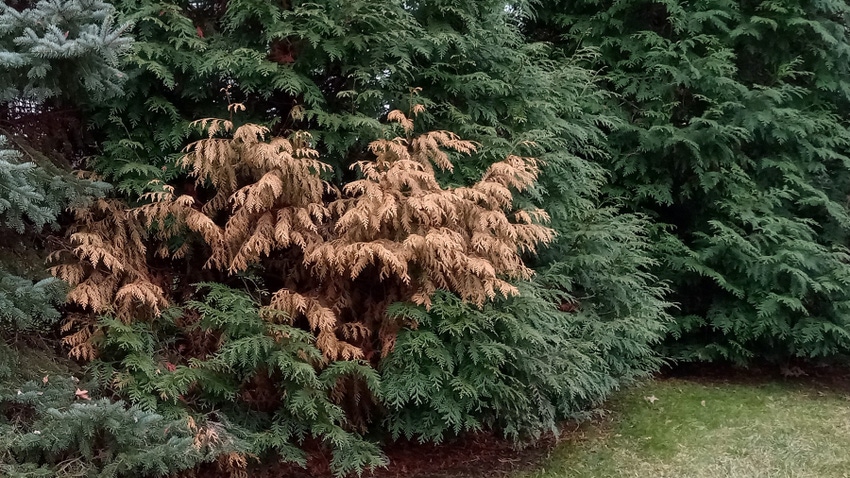February 22, 2024

by Elizabeth Exstrom
What is causing brown branches on my arborvitae tree? The answer isn’t as easy as it sounds. There are many causes to brown branches in arborvitae, and knowing the exact cause can be difficult for an expert to determine — even with a photo in hand.
Knowing when to dig deeper and what to look for can be helpful to determine the cause. Below are the common causes for brown branches in arborvitae and what to watch for:
Wildlife damage. Sometimes critters such as voles, rabbits or squirrels can strip the bark off looking for a snack or for a water source. Look closely at the branch to determine if the bark is still intact or if it has been removed. If the bark has been completely removed all around the branch, it’s best to remove it.
Broken branches because of snow or ice load. When the weight of snow or ice becomes too great, it can cause the branches to break. Follow the discolored branch back to the trunk of the tree to see if the branches are broken or twisted. Broken branches can be pruned whenever noticed.
Natural needle drop. Just like deciduous trees drop their leaves, evergreen trees lose their leaves (needles) as well. With natural needle drop, the yellow or brown needles are located back under the canopy and are most noticeable in the fall.
Fungal infection. Fungal infections also cause brown branches. If it’s a fungal infection, black spots (fungal fruiting bodies) can often be found on the dead branch or at the area right where the dead portion meets the living portion. If it is fungal, fungicide applications are best done preventatively, which means by the time you see the damage, it’s too late to make applications.
Winter desiccation. This happens when evergreens lose more moisture through their needles than the roots can soak up. We can see this most commonly after dry falls and dry, open winters. Damage normally occurs on the north or northwest side of the plant, normally located on the outer edges of the branches.
Regardless of the cause, once an evergreen branch goes completely brown, the only hope for new growth is at the ends of the branches if those buds are still viable. More than likely, you will need to prune the dead branches or at least the dead portions.
When pruning evergreens, don’t leave a stub. Evergreens won’t sprout new growth on bare branches that don’t have any needles. If you have a bare stub back in the canopy, prune the branch back to the trunk of the tree.
Exstrom is a Nebraska Extension horticulture educator and certified arborist.
Please email your farmstead landscaping, turf, forestry or gardening questions to [email protected].
You May Also Like




